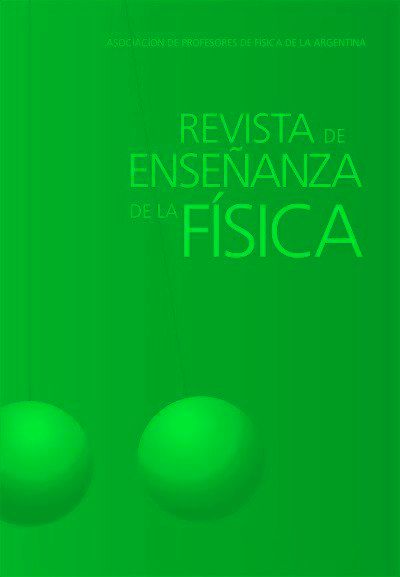Conceptual development through computer simulations: a case study in physics
DOI:
https://doi.org/10.55767/2451.6007.v33.n2.35308Keywords:
Computer simulation, Conceptual change, Coordination Class Theory, ThermodynamicsAbstract
This paper investigates how students engage with a simulation, during problem solving, and learn. It is a case study with three groups
of university students solving a thermodynamics problem (Carnot cycle) assisted by a computational simulation specifically designed
for that circumstance. Coordination Class Theory is used to interpret the results. These reveal that there are three distinct types of
interaction between students and simulation that promote the conceptual development of the participating groups.
References
Adams, W. K., Reid, S., LeMaster, R., McKagan, S., Perkins, K., Dubson, M., & Wieman, C. E. (2008). A study of educational simulations Part II–Interface Design. Journal of Interactive Learning Research, 19(4), 551-577.
Buteler, L., & Coleoni, E. (2016). Solving problems to learn concepts, how does it happen? A case for buoyancy. Physical
Review Physics Education Research, 12(2), 020144.
diSessa, A. A. (2002). Why “conceptual ecology” is a good idea. In M. Limon, & L. Mason (Eds.). Reconsidering conceptual change: Issues in theory and practice (28-60). Dordrecht, the Netherlands: Springer Netherlands.
diSessa, A. A., & Sherin, B. L. (1998). What changes in conceptual change? International journal of science education,
20(10), 1155-1191.
diSessa, A. A., Sherin, B., & Levin, M. (2016). Knowledge analysis: An introduction. In A. diSessa, M. Levin, & N. Brown
(Eds.), Knowledge and interaction: A synthetic agenda for the learning sciences, (30-71).
diSessa, A. A., & Wagner, J. F. (2005). What coordination has to say about transfer. Transfer of learning from a modern
multi-disciplinary perspective, 121-154.
Halldén, O., Haglund, L., & Strömdahl, H. (2007). Conceptions and contexts: On the interpretation of interview and
observational data. Educational Psychologist, 42(1), 25-40.
Jordan, B., & Henderson, A. (1995). Interaction analysis: Foundations and practice. The journal of the learning sciences,
4(1), 39-103.
Kluge, A. (2019). Learning science with an interactive simulator: negotiating the practice-theory barrier. International
Journal of Science Education, 41(8), 1071-1095.
Krajcik, J. S., & Mun, K. (2014). Promises and challenges of using learning technologies to promote student learning of
science. Handbook of research on science education, 2, 337-360.
Lowe, R. (2004). Interrogation of a dynamic visualization during learning. Learning and Instruction, 14(3), 257-274
Martinez, G., Naranjo, F. L., Perez, A. L., Suero, M. I., & Pardo, P. J. (2011). Comparative study of the effectiveness of
three learning environments: Hyper-realistic virtual simulations, traditional schematic simulations and traditional laboratory. Physical Review Special Topics-Physics Education Research, 7(2), 020111.
Ronen, M., & Eliahu, M. (2000). Simulation—A bridge between theory and reality: The case of electric circuits. Journal
of computer assisted learning, 16(1), 14-26.
Parnafes, O. (2007). What does “fast” mean? Understanding the physical world through computational representations. The Journal of the Learning Sciences, 16(3), 415-450.
Sengupta, P., Krinks, K.D., Clark, D.B. (2015). Learning to Deflect: Conceptual Change in Physics during Digital Game
Play. Journal of the Learning Sciences, 24(4), 638-674.
Smetana, L. K., & Bell, R. L. (2012). Computer simulations to support science instruction and learning: A critical review
of the literature. International Journal of Science Education, 34(9), 1337-1370.
Velasco, J., & Buteler, L. (2017). Simulaciones computacionales en la enseñanza de la física: una revisión crítica de los
últimos años. Enseñanza de las ciencias: revista de investigación y experiencias didácticas, 35(2), 161-178.
Downloads
Published
Issue
Section
License
Copyright (c) 2021 Juan José Velasco, Laura Buteler Buteler, Enrique Andrés Coleoni

This work is licensed under a Creative Commons Attribution-NonCommercial-NoDerivatives 4.0 International License.
Aquellos autores/as que tengan publicaciones con esta revista, aceptan los términos siguientes:Los autores/as conservarán sus derechos de copiar y redistribuir el material, bajo los términos estipulados en la Licencia de reconocimiento, no comercial, sin obras derivadas de Creative Commons que permite a terceros compartir la obra bajo las siguientes condiciones:
- Reconocimiento — Debe reconocer adecuadamente la autoría, proporcionar un enlace a la licencia e indicar si se han realizado cambios. Puede hacerlo de cualquier manera razonable, pero no de una manera que sugiera que tiene el apoyo del licenciador o lo recibe por el uso que hace.
- NoComercial — No puede utilizar el material para una finalidad comercial.
- SinObraDerivada — Si remezcla, transforma o crea a partir del material, no puede difundir el material modificado.
- Los autores/as podrán adoptar otros acuerdos de licencia no exclusiva de distribución de la versión de la obra publicada (p. ej.: depositarla en un archivo telemático institucional o publicarla en un volumen monográfico) siempre que se indique la publicación inicial en esta revista.
- Se permite y recomienda a los autores/as difundir su obra a través de Internet (p. ej.: en archivos telemáticos institucionales o en su página web) antes y durante el proceso de envío, lo cual puede producir intercambios interesantes y aumentar las citas de la obra publicada. (Véase El efecto del acceso abierto).










